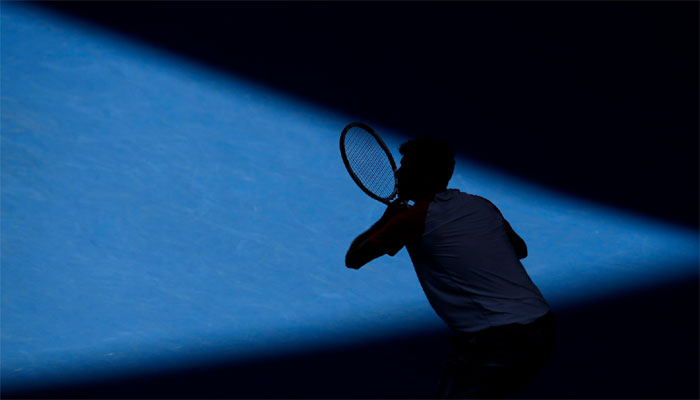
Whisper it quietly, but there appears to be a shady problem hovering over tennis.
Yesterday’s news that Oliver Anderson, winner of Australian Open Boy’s singles title last year on home soil, has been charged with match-fixing is worrying to hear. And what is more worrying is the fact it is not the first time match-fixing has cropped up in tennis recently.
On the eve of last year’s Australian Open, secret files were leaked by the BBC and BuzzFeed showing that 16 who have been ranked in the world top 50 at some point in the last 10 years had been flagged up by the Tennis Integrity Unit as throwing matches, but had not been properly investigated.
Then at the start of December, a story broke about 34 people being arrested in Spain and Portugal in connection with match-fixing in tennis across 17 different events. Of those who were arrested, six were players.
On top of this, there are various stories of certain matches being looked into over strange betting patterns, including a clash between Russia’s Nikolay Davydenko and Martin Vassallo Arguello of Argentina in Sopot in August 2007. Eventually, both players were cleared of any wrongdoing, but it is still an episode which remains in tennis fans’ minds 10 years later.
Following yesterday’s story with Anderson, some of the top players of the men’s game have come out and expressed their own concerns and thoughts, including Andy Murray, Novak Djokovic and Rafael Nadal. They are voicing the worries of many in the sport.

An International Review Panel (IRP) set up following the leaked files story are due to give their view on the sport’s practices in order to see what can be done to resolve the problem before the Australian Open begins on January 16.
But what can we do to extinguish the problem?
The first thing we have to do is accept that the problem is a big one.
In February last year, Russia’s Dinara Safina described the allegations of match-fixing in the sport as “absurd.” Obviously she is entitled to her opinion, but like the old cliché says, denial is not just a big river in Africa. It is also a very dangerous thing to fall into.
Things can only be fixed (the good sort of fixing) once there is an acceptance that there is a problem. If there are still people involved in the sport who are happy to shrug off the problem, then the sport is doomed.
Tennis’ administrators and law enforcers must also get to the players when they are young and beginning their professional careers in order to stub out the idea that accepting bribes will be an easy way out of financial woes.
As much as we watch stars like Murray and Djokovic and think what a wonderful life they live, it is not as easy as it looks. Unless helped by various forms of sponsorship or backing from a national governing body, professional tennis players have a lot of bills to foot such as travel costs for tournaments around the world and paying their coaches. Depending on how good a player is, this could lead to them having to dish out most of their hard-earned prize money, a precious thing for many young players just starting out.
It is easy to see why a young player might be enticed into the dark world of corruption with this in mind. So the International Tennis Federation must keep talking to players and make it clear that although the riches offered in bribes might look good, the pitfalls of accepting them and then being caught are not worth it. This must also be a message portrayed by the Association of Tennis Professionals and Women’s Tennis Association Tours.
Last month, it was revealed Tennis Australia, organizers of the Australian Open, were stepping up their anti-corruption fight by offering a larger prize fund for those who qualify for the year’s opening Grand Slam.
The basic idea behind this move is that if players earn more even if they are knocked out in the first round, they are less likely to consider accepting a bribe.
This is a positive and proactive move from Tennis Australia. However, there is always a limit to the prize pots dependent on the accounts of the organizers and the sponsors who help cough up cash for the competitions. If everyone takes up a similar plan, then the finances in the sport will have to go up and that is not an idea we can just assume will definitely happen.
Perhaps the biggest issue is it is hard to tell when a player is deliberately throwing a game, set or match.
You cannot just pick up on, let’s say, a singles match which finishes 6-0, 6-0 as a definite fix. It is not actually that rare a score, especially in the opening rounds of Grand Slams when the top stars face wildcards and lower ranked players.
If you were to take every result like this as suspicious, then you would be tarring a lot of innocent players with a brush they do not deserve to receive. Players do have bad days, just like in any sport.
So all we can seemingly do is sit here and hope the investigators catch any culprits like a net catches a weak and under-hit forehand shot.
That said, we cannot just keep trying to bury our heads in the sand on this matter though. We have to keep fighting against those trying to corrupt this fantastic sport.
To the people on the IRP – the ball is in your court. Let’s try and smash it home for a cross-court winner.
By George Thorpe
Republished with permission from insidethegames.biz.